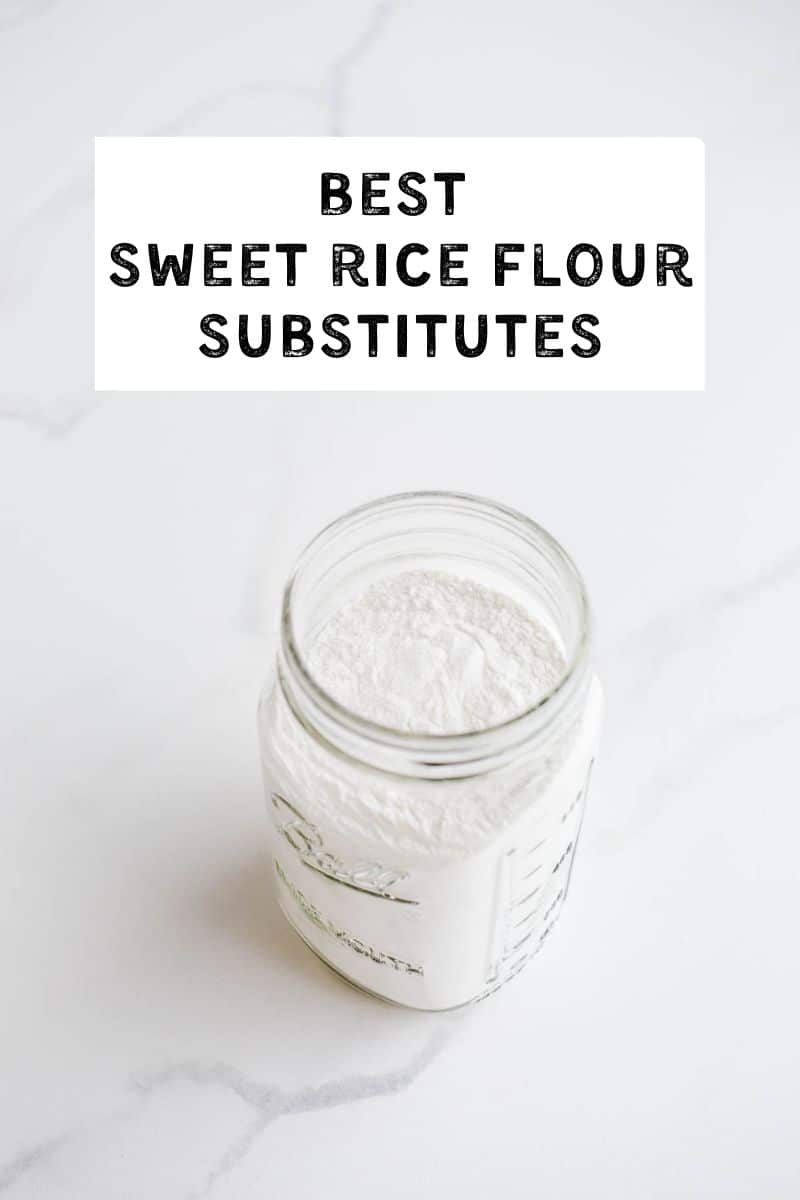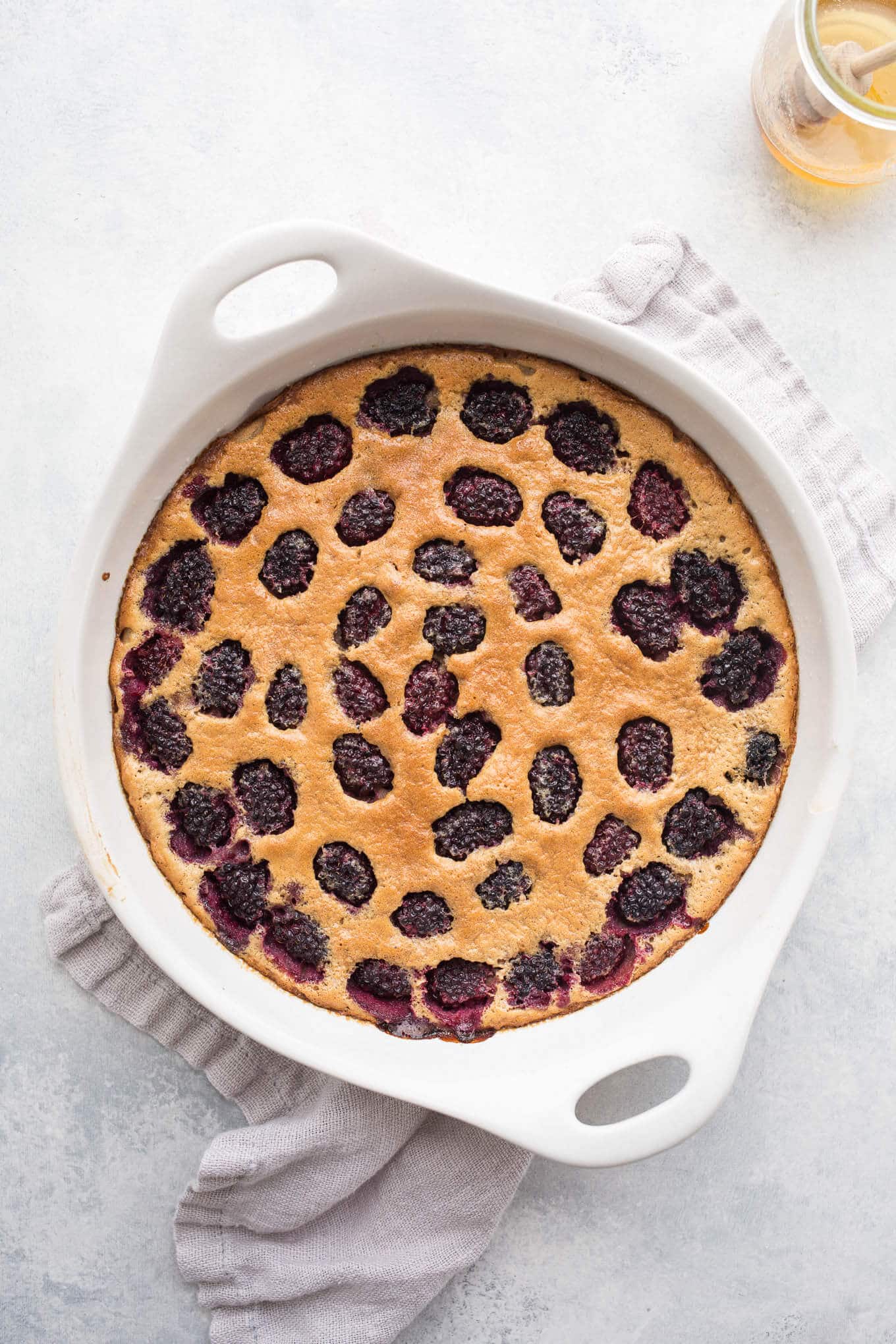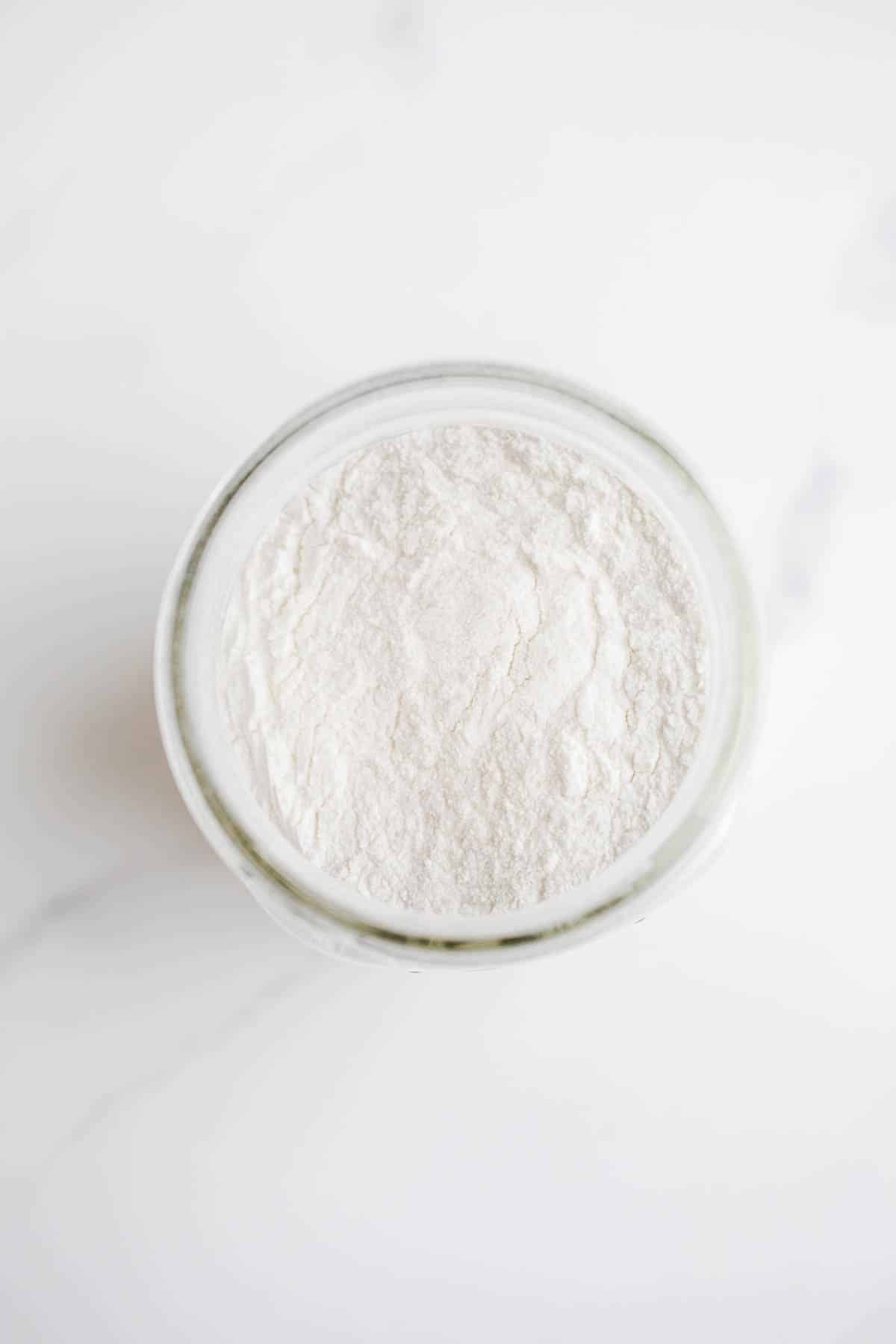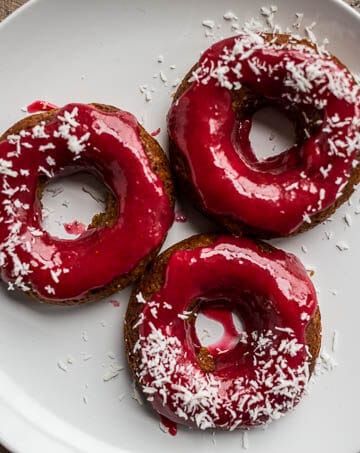Looking for a sweet rice flour substitute? Explore our guide to find the best sweet rice flour alternatives such as tapioca starch, arrowroot starch, and potato starch. Learn how to make substitutions for similar results in a variety of recipes.

What is sweet white rice flour?
Sweet white rice flour, also known as glutinous rice flour, sticky rice flour, or mochiko flour, is a type of flour made from ground glutinous rice. Despite its name, glutinous rice does not contain gluten and is safe for people with Celiac disease, gluten intolerance, and those on a gluten-free diet.
Glutinous rice is a type of short-grain rice that becomes sticky when cooked due to its high amylopectin content. To make the flour, the rice grains are soaked, ground, and then processed into fine powder. The result is a smooth and powdery texture.
It is commonly used in Asian cooking and cuisine, particularly in dishes that require a sticky or chewy texture. With its sweet flavor, it is a staple ingredient in many traditional desserts, such as mochi, rice dumplings, and various sweet pastries.
The flour is also used as a thickening agent in soups, sauces, and puddings and is great for gluten-free baking.
Is sweet rice flour the same as white rice flour?
No, sweet white rice flour is not the same as white rice flour. While both are made from rice, they are derived from different types of rice and have distinct characteristics and uses.
Sweet rice flour has a sticky and chewy texture when cooked and white rice flour has a lighter texture. Like cassava flour and tapioca flour, both derived from the cassava root, they can appear similar but have different uses and qualities.
Uses
Asian desserts - A key ingredient in many traditional Asian desserts like mochi, tangyuan, and various steamed cakes.
Thickening agent - Due to its sticky and thickening properties, it is often used as a thickening agent in soups, stews, gravies, and sauces. It helps to add body and texture to these dishes.
Gluten-free baking - It is commonly used as a gluten-free alternative in baking. When used in combination with other gluten-free flour it makes delicious cakes, cookies, bars, bread, custards, and pastries. Its starchy quality makes it useful as a binding agent.
Coating and frying - Great as a coating for foods before frying, it provides a crispy and golden exterior when deep-fried or pan-fried.
Noodle and dumpling making - It is sometimes used in the preparation of gluten-free noodles and dumplings.
Thickening ice cream - When used as a thickening agent in homemade ice cream recipes, it helps create a smooth and creamy texture while preventing ice crystals from forming.

What is a good substitute for sweet white rice flour?
The best substitutes for sweet rice flour are the types that also have high starch content. Choosing the best alternative comes down to the properties and characteristics of the recipe that needs to be replaced.
Here are the best alternatives:
1. Tapioca Flour
Tapioca flour, also known as tapioca starch, has a similar texture, adds a chewy texture, and can help bind ingredients together in certain recipes. Great for baked goods, sauces, gravies, and pastry dough. Depending on the binding you need in your recipe, you may need to add an additional binder such as psyllium husk powder.
To, use tapioca flour in a 1:1 ratio as a replacement.
2. Arrowroot Starch
Arrowroot starch, also known as arrowroot flour, has similar thickening properties and some binding ability in certain recipes. Depending on the binding you need in your recipe, you may need to add an additional binder such as psyllium.
To substitute, use arrowroot starch in a 1:1 ratio as a replacement.
3. Potato Starch
Potato starch (not to be confused with potato flour) is another alternative with a neutral flavor that has some thickening properties and can add a slightly lighter texture to baked goods. It has some binding qualities as well and is great for dredging, pastry dough, and noodles.
To substitute, use potato starch in a 1:1 ratio.
4. Cornstarch
Cornstarch, a popular ingredient in most pantries, is used often as a thickening agent. It can work as a great substitute in recipes that require thickening and in gravies, sauces, soups, and fried foods. It adds tenderness and crispness to baked goods.
It won't provide the same sticky or chewy texture, or ability to bind as a gluten replacement, so it may not be suitable for all recipes.
To substitute in recipes that need thickening, use cornstarch in a 1:1 ratio.
Tips
- Depending on the type of recipe, alternative flour you are using, and the binders in the recipe (such as eggs, psyllium husk fiber, or flax eggs) or lack thereof, you may need an additional binder or starch to keep the final product from crumbling.
- To optimize results, you can blend your substitute with another gluten-free flour like tapioca starch or potato starch. This can help balance out the texture and improve the overall outcome of the recipe.
- A kitchen scale is the easiest way to substitute flour by weight.

FAQs
There are three major types of rice flour that you can find in most grocery stores and online retailers; white, glutinous, and brown rice flour.
Sweet rice flour, or glutinous flour, has a mild flavor. Compared to white rice flour it has a hint of sweetness.
Conclusion
In conclusion, there are several gluten-free options that can be used as substitutes for sweet rice flour, depending on the recipe and desired flavor and texture. Tapioca starch, arrowroot starch, and cornstarch are all good options.
More sweet rice flour recipes
The post Best Sweet Rice Flour Substitutes appeared first on Salted Plains.


